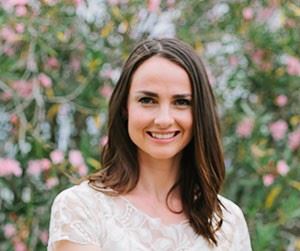The United Nations has declared 2025 as the International Year of Co-operatives. According to The Business Council of Co-operatives and Mutuals, (BCCM) the national cross sectoral peak body for Australian co-operatives and mutuals, there are 1,819 co-ops and mutuals operating in Australia. Between them, they have a combined membership of more than 34.8 million, with eight in ten Australians being members of at least one co-operative or mutual.
 My first personal experience of a co-op was the University of Queensland (UQ) Co-op bookshop where I purchased secondhand textbooks for my journalism and drama subjects as part of my arts Degree over 2 decades ago. From memory you paid a single fee to become a lifetime member and then had access rights to purchase the usually discounted books on offer. Often dog-eared and coffee stained, underlined, highlighted and torn; the pre-loved books served their purpose and kept a few extra pennies in my pocket.
My first personal experience of a co-op was the University of Queensland (UQ) Co-op bookshop where I purchased secondhand textbooks for my journalism and drama subjects as part of my arts Degree over 2 decades ago. From memory you paid a single fee to become a lifetime member and then had access rights to purchase the usually discounted books on offer. Often dog-eared and coffee stained, underlined, highlighted and torn; the pre-loved books served their purpose and kept a few extra pennies in my pocket.
Then in my mid 20s I discovered the Katoomba Food Co-op, as introduced by my bestie who had bought a little cottage with her partner which was walking distance from town. My first time weighing my own produce in little brown paper bags (for dry goods) and filling recycled glass jars for liquids, I walked out with more than I could carry. I’d discovered all sorts of obscure herbs and spices and random grains I didn’t even know existed. For the tree hugging hippie that I was back then, the idea of having as much organic granola as I could carry was a dream come true. Had I been a local, a member I absolutely would have become. But as a Sydneysider, and mere occasional visitor, the 10%-member discount in exchange for the yearly membership wouldn’t have saved me any money. I loved that I could still shop without being a member, though the membership is actually what allowed the business to exist. It’s still running today (and has been around since 1981) and is a nostalgic stop whenever we visit Katoomba.
 In 2011 I began my work with Encompass Credit Union (which was later to become Australian Mutual Bank) and I experienced a whole new expression of a cooperative. I honestly hadn’t known that financial institutions could also be a co-operative at the time. If you’re reading this you likely already know Credit Unions and Mutual Banks are customer-owned, or owned by their members rather than external shareholders. While customer owned banks offer the full range of traditional banking products and services, they also have a strong focus on community and ethical values. I recall being so impressed with the generosity of staff when I first began work at the Surry Hills head office in late November 2011. I witnessed over the course of a few weeks, a giant pile of Christmas gifts growing in our entry hall as members and staff brought in gifts to go towards the Barnardos Christmas Appeal to support children and families in need. Those first few weeks demonstrated to me the true spirit of a co-operative.
In 2011 I began my work with Encompass Credit Union (which was later to become Australian Mutual Bank) and I experienced a whole new expression of a cooperative. I honestly hadn’t known that financial institutions could also be a co-operative at the time. If you’re reading this you likely already know Credit Unions and Mutual Banks are customer-owned, or owned by their members rather than external shareholders. While customer owned banks offer the full range of traditional banking products and services, they also have a strong focus on community and ethical values. I recall being so impressed with the generosity of staff when I first began work at the Surry Hills head office in late November 2011. I witnessed over the course of a few weeks, a giant pile of Christmas gifts growing in our entry hall as members and staff brought in gifts to go towards the Barnardos Christmas Appeal to support children and families in need. Those first few weeks demonstrated to me the true spirit of a co-operative.
In the Australian banking sector alone, there are 53 organisations with COBA (Customer Owned Banking Association) representing mutual banks, credit unions and building societies. What also sets them apart from private banks is they are governed by a code of practice and standards which are actually higher than the law requires. It outlines clearly and transparently what customers can expect and reflects the customer owned banking sector’s commitment to serving the interests of its customers.
Co-ops cover all spectrums of the economy, from agriculture to retail. Even the milk in my fridge is from a co-op, Lismore’s Norco, Australia’s largest dairy co-op, owned by local farmers. As a co-op it guarantees a good milk price for the farmers by owning the processing and marketing activities and has successfully kept farmers in business through drought and climate change. Established in Byron Bay in 1895 Norco has 326 active members on 190 dairy farms in northern New South Wales and Southeast Queensland. You might only pay a few dollars for a litre of milk, but collectively Norco's turnover reached 651m in 2023, with Members suppliers producing 214 million litres of milk.
 Flick through your wallet and you may just find more than one card linked to a co-op. The NRMA is one of Australia’s largest member owned organisations, one that has been going for over 100 years. While it is owned by a publicly listed company (IAG Limited) NRMA itself has remained a member owned mutual with over 3.1 million members (according to its 2024 annual report).
Flick through your wallet and you may just find more than one card linked to a co-op. The NRMA is one of Australia’s largest member owned organisations, one that has been going for over 100 years. While it is owned by a publicly listed company (IAG Limited) NRMA itself has remained a member owned mutual with over 3.1 million members (according to its 2024 annual report).
While there are plenty of community-based co-ops run by volunteers, Mutuals also employ a huge number of Australians. Almost 100,000 Aussies* are employed by a mutual, and according to the BCCM's National Mutual Economy Report, the top 100 mutuals (which include some super funds) held assets of $1.64 trillion dollars in 2023. So, while the humble secondhand bookstore or the rustic mountains muesli supplier might not be raking in the millions, a mutual can actually be a highly profitable business model.
With customers at the centre of all they do, cooperatives have a long-standing history of putting their customers first and supporting local communities. More than 5 million Australians choose customer owned banking institutions and Australian Mutual Bank is very proud to have been a cooperative from the very beginning, starting way back in 1953, with the humble beginnings as the Motor Transport Employees Savings & Loans Co-operative.
*reference Open Road magazine, Autumn 2025 issue
** The Business Council of Co-operatives and Mutuals (BCCM) is the national cross sectoral peak body for Australian co-operatives and mutuals

Alison Gallagher is a freelance writer, resourcefulness expert and entrepreneur. She has been featured in various publications including Stellar Magazine, Australian Health and Fitness Magazine, and Cleo Magazine. Alison is particularly passionate about sharing practical tips on how to live simply, sustainably and seasonally.






